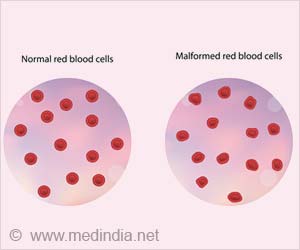Increasing awareness of stem cell therapy on World Sickle Cell Day 2023 can help patients with sickle cell disease, an inherited blood disorder that affects millions worldwide.

‘Stem cell transplant being a life-saving procedure for Sickle Cell Disease needs increased awareness, advocacy, and collaboration to enhance the care and outcomes. #Sickle Cell Disease #Genetic disease #Stem cell donors’





Normal red blood cells are round and flexible, but in sickle cell disease (1✔ ✔Trusted SourceSickle Cell Disease: A Review
Go to source), they become crescent-shaped and rigid, leading to blockages in blood vessels, causing pain, organ damage, and other complications.
Individuals inherit the condition when both parents carry the sickle cell trait. Screening is a vital tool in identifying carriers and individuals with the disease, allowing for early intervention and proper management.
Believe in the Potential of Stem Cell Transplant Providing Hope for Sickle Cell Disease
By implementing comprehensive screening programs, experts can identify at-risk individuals and provide them with the necessary support, education, and treatment options. In India, the burden of sickle cell disease has significantly increased making it become the second-highest in terms of disease burden, after Nigeria.India has over 20 million diagnosed patients. Tragically, 50-80 percent of children with sickle cell disease struggle to reach age five. Each year, around 150,000 to 200,000 children are born with sickle cell disease in India, facing chronic pain, anemia, organ damage, increased susceptibility to infections, stroke, and a shorter life expectancy.
To combat the disease burden, the Indian government is running a dedicated National Sickle Cell Disease Programme to achieve the ambitious goal of eradicating it by 2047.
Stem cell transplants provide hope for sickle cell patients. However, besides the limited availability of curative stem cell transplants and the unavailability of stem cell donors, awareness about stem cell therapy is also low (2✔ ✔Trusted Source
Stem cell transplantation in sickle cell disease: therapeutic potential and challenges faced
Go to source).
Advertisement
The procedure can cure sickle cell and alleviate symptoms, but a stem cell transplant is a multifaceted procedure that requires specialized infrastructure, trained personnel, and meticulous post-transplant care.
Advertisement
The experts urged for increasing awareness, advocacy, and collaborations among stakeholders to enhance the care and outcomes for sickle cell patients in India.
Disease elimination should be the ultimate goal. Through advancements in medical research, significant strides in understanding this complex condition have been made. Investing in research, genetic counseling, and widespread awareness campaigns can help us break the cycle of inherited sickle cell disease.
References:
- Sickle Cell Disease: A Review - (https://jamanetwork.com/journals/jama/article-abstract/2793821)
- Stem cell transplantation in sickle cell disease: therapeutic potential and challenges faced - (https://www.tandfonline.com/doi/abs/10.1080/17474086.2018.1486703?)
Source-Medindia















